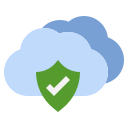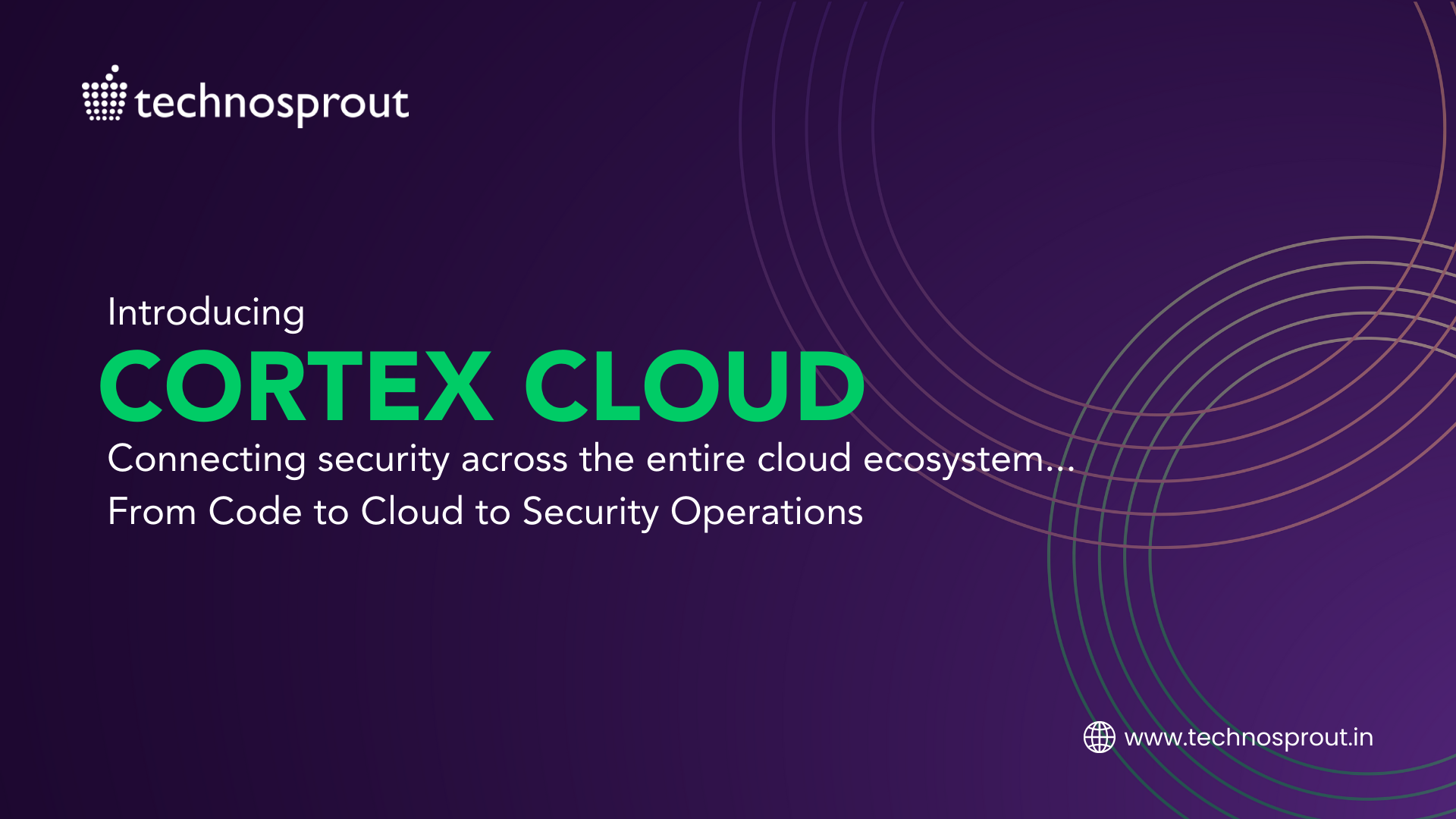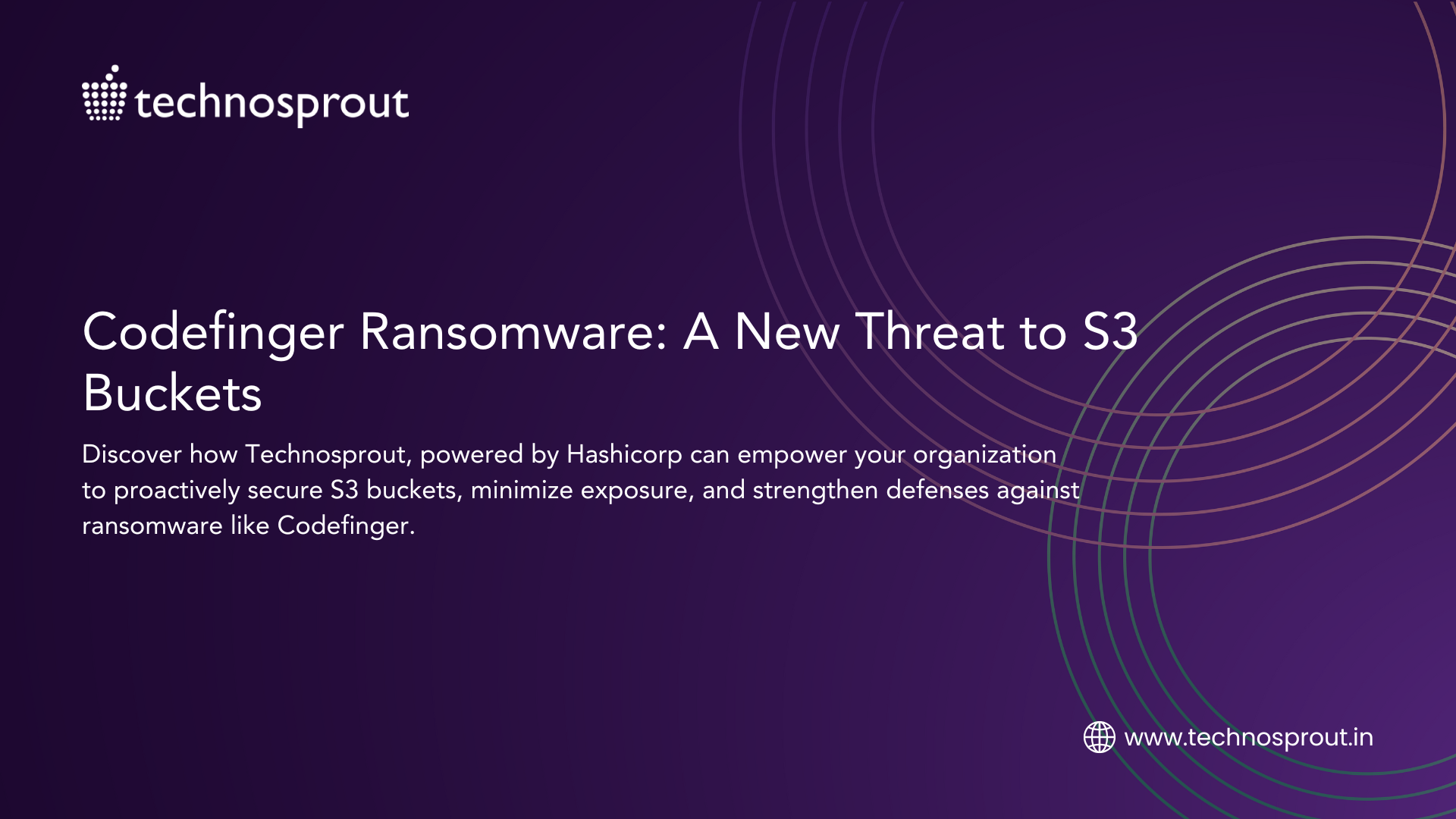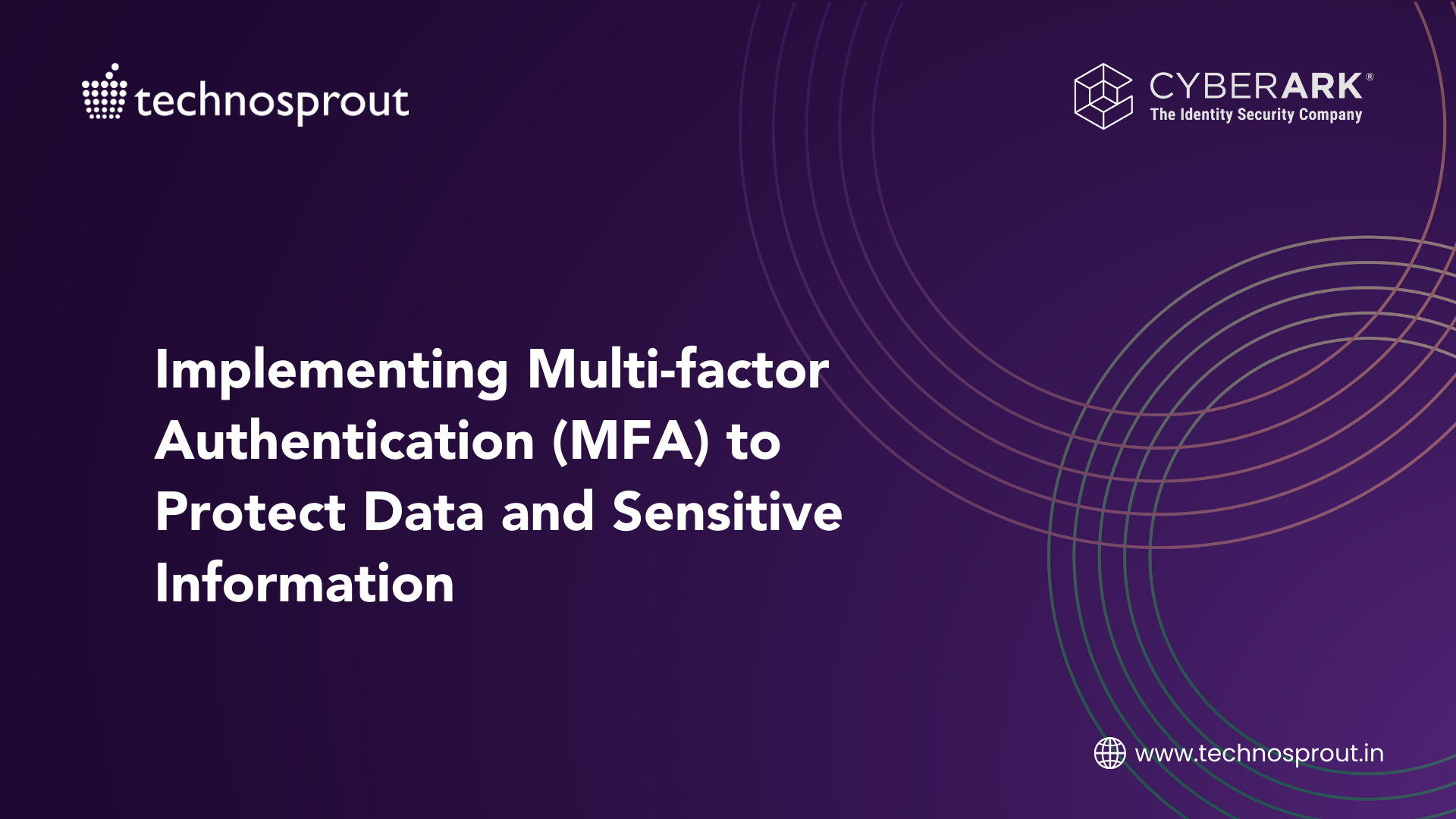A Comprehensive guide on Cloud Native Application Protection Platform (CNAPP)
Cloud technology has greatly improved business and IT, but has also made infrastructure security much more complicated. The challenge is to integrate various tools used during development and production to ensure that there are no security gaps in applications and the platforms they run on. This requires a comprehensive approach to security that covers the entire development lifecycle, from design to deployment
One of the latest buzzwords in the world of infrastructure security is Cloud Native Application Protection Platform (CNAPP). This emerging technology aims to address the security challenges posed by the increasing adoption of cloud-native applications and microservices architectures. CNAPP offers a comprehensive approach to securing cloud-native applications by integrating various security tools and solutions into a single platform.
CNAPP focuses on securing the entire development lifecycle of cloud-native applications, from design to deployment and beyond. It provides a unified and centralized view of security across the application stack, including container images, orchestrators and cloud infrastructure. With CNAPP, businesses can benefit from enhanced security visibility, reduced complexity and improved compliance.
This is just the tip of the iceberg, in this blog, we are going to Dig Deep into Knowing
What is Cloud Native Protection Platform and its features?
- What is Code Security and its Features ?
- What is CWPP and its features?
- What is CSPM and its features?
Cloud Native Application Protection Platform
Are you worried about the security of your cloud-native applications in today’s dynamic cloud environment? Look no further than the Cloud Native Application Protection Platform (CNAPP). CNAPP is a unified, end-to-end solution designed to secure your cloud-native applications across the full application lifecycle, from development to production.
Say goodbye to the patchwork approach of using separate solutions or technologies that can create blind spots and extra work for your team. With CNAPP, you can ensure full-stack security and detect and remediate issues early in the application lifecycle.
But don’t just take our word for it. Cloud-native application development has revolutionized the software development industry with its agility, scalability and flexibility. Enter Prisma Cloud – a comprehensive cloud security platform that delivers automated security for cloud-native infrastructure and applications, integrated with developer tools. With Prisma Cloud, you can embed security across the software development cycle and identify vulnerabilities, misconfigurations, compliance violations and exposed secrets earlier in the development lifecycle.
So why wait? Automate your cloud security scanning in code and add a layer of protection to your cloud-native applications with CNAPP and Prisma Cloud.
Code Security & It’s features…
Cloud-native application development has become increasingly popular due to its agility and scalability. However, security teams face a challenge in securing cloud-native infrastructure and applications from code to cloud. Prisma Cloud is a comprehensive cloud security platform that automates security for cloud-native infrastructure and applications, integrated with developer tools. Its key features include securing code across all modern architectures and software supply chains, infrastructure as code scanning, container image scanning, policy as code, supply chain security and secrets security. With Prisma Cloud, developers and security teams can work together to embed security across the software development cycle, identify vulnerabilities, misconfigurations, compliance violations and exposed secrets earlier in the development lifecycle. Now let’s dive into the features part.
Infrastructure as Code Scanning:
Prisma Cloud provides an efficient solution for securing cloud infrastructure by offering automation and integrating security into workflows for various DevOps tools. With its native integrations for IDEs, VCS and CI/CD tooling, developers can embed code security feedback directly into their existing workflows. The tool includes deep context for misconfigurations, automatically tracks dependencies for IaC resources and the most recent developer modifiers to improve collaboration in large teams.
Container Image Scanning:
Prisma Cloud offers security teams the ability to implement guardrails for container images to prevent vulnerabilities, compliance violations and exposed secrets. Developers can easily pinpoint any weaknesses and determine the appropriate remediation measures with twistcli, which can identify vulnerabilities in operating systems and open source packages within container image layers. Furthermore, Prisma provides guardrails that block images that do not meet the severity level requirements and container image dependencies and configurations can be checked for violations against popular benchmarks like CIS as well as proprietary issues such as malware during build time.
Policy as Code:
Prisma Cloud offers policy-as-code, which provides controls that are built directly into the code. This enables teams to replicate, version control and test their controls against live code repositories. Teams can define, test and version control check-lists, skip-lists and graph-based custom policies in Python and YAML for IaC templates. To add to the above, one of the key benefits of policy-as-code is the ability to provide feedback directly on the code being written.
Supply Chain Security:
Prisma Cloud offers a comprehensive solution to secure your supply chain and keep your pipelines safe by providing visibility into the components of your supply chain and posture for your version control systems (VCS) and CI/CD pipelines. With its graph visualization, security teams can easily detect threats and with its connected visibility and policy controls, security teams can rest easy knowing that all deployed code is secure.
Secrets Security:
In addition to infrastructure and container security, Prisma Cloud also provides robust secret security for cloud-native applications. This tool can automatically detect and protect sensitive information like passwords, tokens and API keys. By identifying these secrets early in the development lifecycle, teams can prevent unauthorized access and protect their applications from potential breaches.
Prisma Cloud also integrates with popular secrets management tools like HashiCorp Vault, AWS Secrets Manager and Azure Key Vault to streamline the management of secrets across multiple cloud environments. This feature ensures that secrets remain secure and easily accessible only to authorized users.
Software Composition Analysis:
Prisma Cloud offers advanced software composition analysis (SCA) capabilities that allow teams to manage the risks of open source software components. By scanning open source packages and libraries used in applications, this tool can identify vulnerabilities and dependencies that may pose a risk to the application.
Prisma Cloud provides a comprehensive database of open source components and their known vulnerabilities, along with proprietary intelligence to help teams understand the risks associated with their software. With automated scanning and reporting, teams can quickly identify and remediate potential vulnerabilities in their code.
OSS License Analysis:
In addition to SCA, Prisma Cloud also offers OSS license analysis capabilities. This tool can automatically detect and report on the licenses associated with open source software components used in applications. By providing a clear understanding of the licenses associated with each component, teams can ensure that they are in compliance with license requirements and avoid legal issues.
Prisma Cloud’s OSS license analysis also includes proprietary intelligence to help teams understand the legal implications of various licenses and make informed decisions about their software components. With automated scanning and reporting, teams can quickly identify and address any license compliance issues in their code.
Cloud Workload Protection & It’s feature…
Cloud Workload Protection Platform (CWPP) is a workload-centric security solution that provides uniform security controls and visibility for physical machines, virtual machines, containers and serverless applications. As more organizations move their workloads to the cloud, the need for robust security solutions has become critical, making CWPP a crucial tool for protecting cloud workloads and staying ahead of evolving cybersecurity threats. CWPP solutions offer automated threat detection and response capabilities, identity and access management, data encryption, compliance reporting and more, making workload security proactive rather than reactive. The benefits of CWPP include agility, flexibility, cost-effectiveness, improved security and visibility and compliance. Technosprout Systems Pvt. Ltd. is a trusted workforce that can help you implement and manage your cloud workload protection in Prisma.
CWPPs are designed to detect and mitigate security threats within cloud-based applications, covering a range of workloads like virtual machines, containers and serverless functions. The key features of Prisma Cloud’s CWPP are as follows:
Vulnerability Management: Offers a comprehensive view of vulnerabilities across the application lifecycle and helps prioritize risks in real-time. Users can set precise policies to alert on or prevent vulnerable components from running and continuously monitor container registries.
Compliance: Provides real-time and historical views of compliance status for hosts, containers and serverless functions. Covers leading frameworks such as PCI DSS, HIPAA, GDPR and NIST SP 800-190 with pre-built compliance templates.
CI/CD Security: Integrates security measures throughout the application lifecycle, beginning with vulnerability scanning and hardening checks integrated within the CI/CD workflow. Prisma Cloud supports all application components, including Git repositories, container images, AMIs and serverless functions.
Runtime Defense: Provides modern, automated protection to prevent unwanted activity and threats. Users can secure Linux and Windows hosts, containers and Kubernetes with a single agent and capture detailed forensics of every audit or security incident.
Container Access Control: Offers integrated security for cloud-native architectures, allowing organizations to manage Docker activities and configurations as well as secrets for containers.
Image Analysis Sandbox: Designed to safely run container images that may contain outdated or vulnerable packages and embedded malware from external repositories. Can scan for suspicious and anomalous container behavior.
Trusted Images: Allows users to define which registries, repositories and images are trustworthy and how.
By leveraging Prisma Cloud’s CWPP, organizations can monitor and secure their cloud environments more effectively, detect and respond to threats in real-time and ensure compliance with industry standards and regulations.
Cloud Security Posture Management & It’s features…
The adoption of cloud computing by enterprises has revolutionized the way businesses operate, but it also brings inherent risks and challenges. As more organizations move their workloads and data to the cloud, security challenges become increasingly significant. To address these challenges, Cloud Security Posture Management (CSPM) has emerged as a crucial tool for maintaining the security of cloud infrastructure. CSPM technology focuses on detecting misconfigurations and compliance risks in cloud environments, providing ongoing monitoring to identify potential security policy gaps.
CSPM tools offer real-time visibility into the security posture of cloud infrastructure, helping to identify potential vulnerabilities and misconfigurations. They also help ensure compliance with industry standards and regulatory requirements by monitoring cloud resources against specific security policies and best practices. CSPM solutions can automatically identify and remediate security issues, reducing the workload for security teams and minimizing the time to respond to security incidents.
The capabilities of CSPM tools vary depending on the specific tool and they may only identify issues related to a particular cloud service or environment such as AWS or Azure. However, overall, CSPM is a powerful security tool that helps organizations proactively manage security risks in their cloud environments, providing better visibility, compliance and risk management capabilities.
The adoption of cloud technologies has brought new cybersecurity risks, but with the right Cloud Security Posture Management (CSPM) tools, organizations can enhance their cloud security posture. CSPM offers a comprehensive set of tools and practices that ensure that cloud resources and applications are secure, compliant and properly configured.
The features of CSPM include:
Visibility Compliance and Governance: CSPM provides complete visibility and protection across any cloud, offering continuous automated monitoring, insights into new and existing assets, anomalous behaviors and potential threats. It also provides automated cloud asset inventory, configuration assessment with built-in policies and compliance management.
Threat Detection: CSPM offers a comprehensive threat detection strategy that includes both traditional policies and anomaly-based policies leveraging machine learning. By monitoring network and user activity, organizations can detect insider threats and potential account compromises. Integrated threat detection dashboards provide powerful insights into alerts and compromises.
Data Security: Data Security is a cloud-native solution that addresses the challenges of discovering and protecting data at scale and velocity. It offers multi cloud data visibility and classification, data governance, malware detection and alerting capabilities based on data classification, data exposure and file types.
Overall, CSPM tools can significantly enhance cloud security posture and reduce the risk of cybersecurity incidents, making it a crucial aspect of any organization’s cybersecurity strategy.
Now, Let’s talk about how you implement and manage CNAPP- And here’s where Technosprout comes in…
Learn more about Technosprout Systems Pvt. Ltd. to Asses, Design, Implement and Manage your Cloud Security Posture. Visit Technosprout to know how we help you secure your assets once you have set foot in the cloud journey and have selected your cloud partner.
On adopting services from Technosprout, the enterprise collaborates with our skilled and trusted workforce led by our service head, who acts as an ongoing consultant to support the enterprise’s adoption of the preferred solution.






